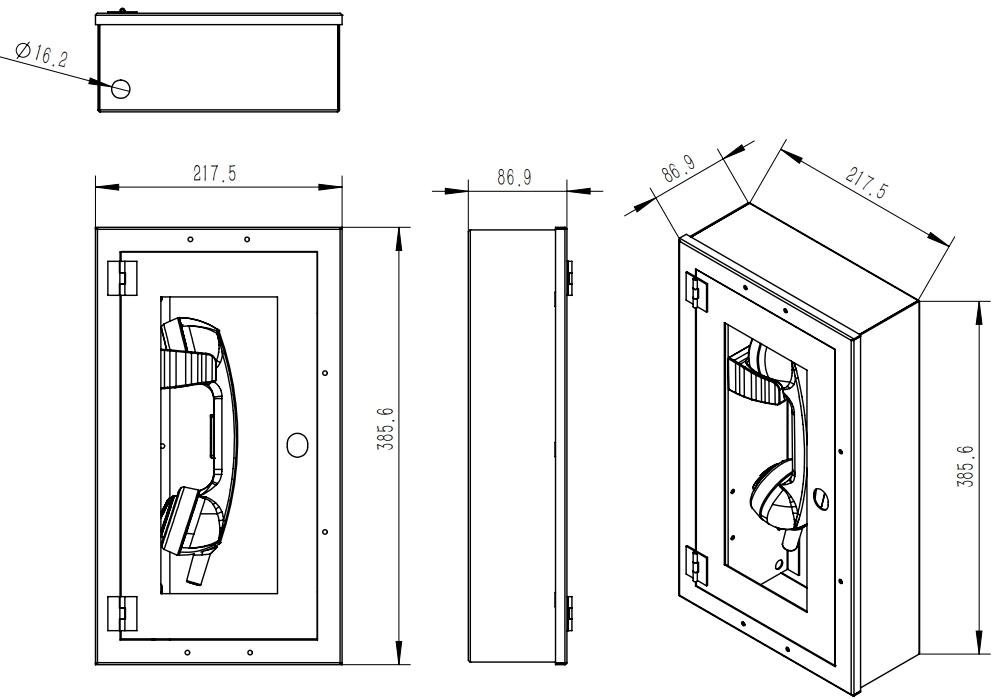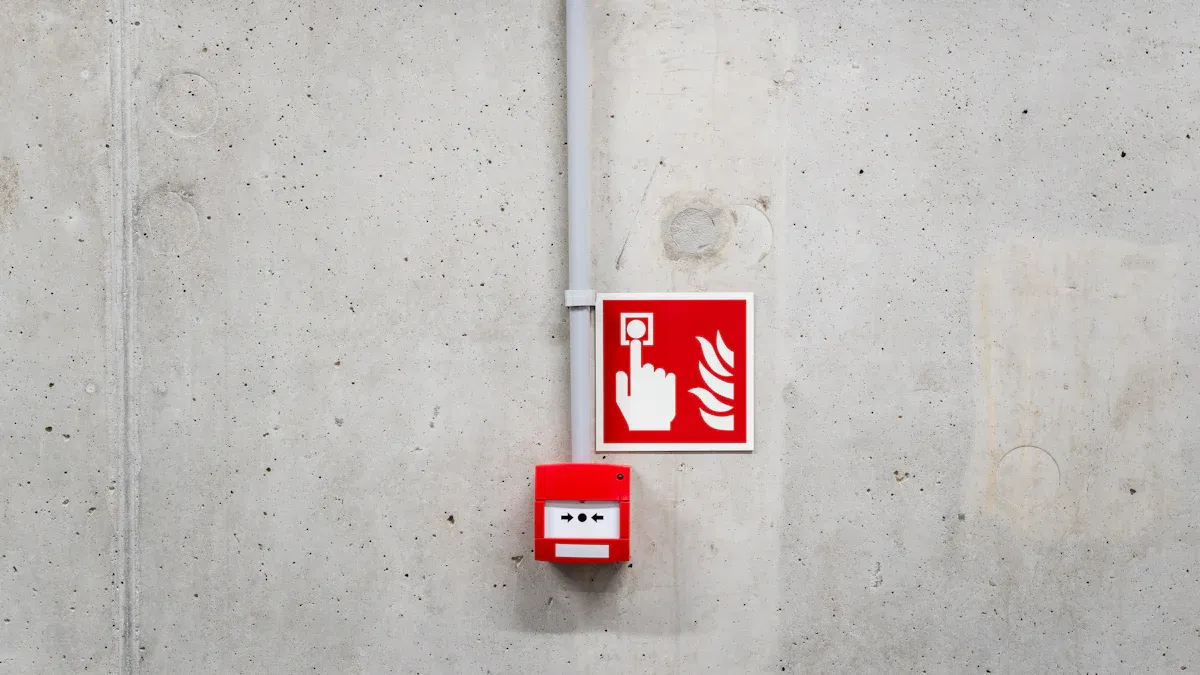
Industries such as hospitals, high-rise buildings, and transportation centers depend on Emergency Voice Communication Systems Fire Telephone for fast, reliable communication during emergencies. Fire Telephone Type A Outstations serve as a direct link between control rooms and responders. A rugged emergency telephone or traffic emergency Telephone ensures clear instructions reach those in danger.
Sectors Requiring Emergency Voice Communication Systems Fire Telephone

High-Rise Commercial and Residential Buildings
High-rise buildings present unique challenges during emergencies. Stairwells, elevators, and long corridors can make communication difficult. Emergency Voice Communication Systems Fire Telephone Type A outstations provide a direct link between control rooms and key locations throughout the building. Firefighters and emergency teams use these systems to coordinate evacuation and rescue efforts. The rugged design of these outstations ensures reliable operation even in harsh conditions. Integration with fire alarm control panels allows for a unified response, improving safety for all occupants.
Hospitals and Healthcare Facilities
Hospitals and healthcare facilities must protect vulnerable patients and staff. Emergency Voice Communication Systems Fire Telephone outstations enable clear, two-way communication between fire officers and control rooms. Staff can receive instructions quickly, which helps maintain order during evacuations. These systems also support integration with other emergency alarms, such as assistance alarms for disabled individuals. Reliable communication ensures that medical teams can focus on patient care while emergency responders manage the situation.
Educational Institutions
Schools, colleges, and universities require fast and reliable communication during emergencies. Emergency Voice Communication Systems Fire Telephone outstations help staff and emergency teams coordinate safe evacuations. Public Address and Voice Alarm systems, certified to standards like EN 54-16, play a critical role in controlled evacuations. These systems use microphones, call stations, and loudspeakers to deliver clear instructions. By providing prompt and reliable communication, they support orderly building clearance and protect students and staff.
Tip: Regular drills and training help staff and students respond quickly when using emergency communication systems.
Transportation Hubs
Airports, train stations, and bus terminals serve thousands of people daily. Emergency Voice Communication Systems Fire Telephone outstations ensure that staff can communicate with control rooms during emergencies. These systems help manage large crowds and direct people to safety. Integration with public address and fire alarm systems allows for coordinated responses. The durable construction of Type A outstations ensures they function reliably in busy, high-traffic environments.
Industrial and Manufacturing Facilities
Industrial sites face a higher risk of fire due to electrical hazards and heavy machinery. Common causes of fire emergencies include:
- Overloaded circuits
- Faulty wiring
- Improper use of electrical equipment
- Outdated electrical systems
Emergency Voice Communication Systems Fire Telephone outstations provide a secure communication link between hazardous areas and central monitoring stations. Reliable pathways ensure that alerts reach emergency teams quickly. Modern systems adapt to digital and cellular technologies, maintaining continuous monitoring. Compliance with standards like NFPA 72 and the International Building Code ensures proper system performance. These features are critical for coordinating emergency responses and protecting workers.
Public Assembly Venues
Stadiums, theaters, and convention centers host large crowds. Emergency Voice Communication Systems Fire Telephone outstations allow staff and emergency responders to communicate during incidents. Quick, clear communication helps manage evacuations and prevent panic. Integration with fire alarms, public address systems, and assistance alarms creates a comprehensive safety network. The robust design of Type A outstations ensures they remain operational even in challenging conditions.
Note: Modern emergency communication systems often combine fire telephones, disabled refuge points, and assistance alarms into a single, easy-to-manage platform. This integration improves safety and simplifies maintenance.
Compliance and Best Practices for Emergency Voice Communication Systems Fire Telephone
Regulatory Codes and Standards
BS 5839-9:2021 stands as the main national code for installing Emergency Voice Communication Systems Fire Telephone Type A outstations in the UK. This standard gives detailed guidance on design, installation, commissioning, and maintenance. It focuses on life safety and ensures that systems work reliably during fire emergencies. The code covers system components, installation practices, and user responsibilities. It does not include general intercoms or voice alarm systems. Facility managers should follow this standard to meet legal and safety requirements.
System Design and Installation Considerations
Proper design and installation help ensure that emergency communication systems perform well in real situations. Planners should place outstations at key points, such as stairwells, refuge areas, and control rooms. Installers must use durable materials and weather-resistant enclosures to protect equipment. Clear labeling and easy access help responders use the system quickly. A table can help summarize important design steps:
| Step | Description |
|---|---|
| Site Assessment | Identify critical communication points |
| Equipment Selection | Choose robust, visible outstations |
| Placement | Install at accessible locations |
| Integration | Connect with fire alarm systems |
Maintenance and Training Requirements
Regular maintenance keeps Emergency Voice Communication Systems Fire Telephone ready for emergencies. Teams should test equipment, check connections, and replace damaged parts. Staff training ensures that everyone knows how to use the system. Training sessions and drills help build confidence and speed during real events.
Tip: Schedule monthly checks and annual full-system tests to maintain peak performance.
Emergency Voice Communication Systems Fire Telephone Type A outstations protect lives and help organizations meet fire safety laws.
- These systems guide safe evacuations and support trained staff.
- They provide reliable communication for responders.
Facility managers should review and upgrade their emergency communication systems to ensure safety and compliance.
FAQ
What is a Fire Telephone Type A Outstation?
A Fire Telephone Type A Outstation provides a direct, secure voice link between emergency responders and control rooms during fire emergencies.
Who should use Emergency Voice Communication Systems?
Facility managers, safety officers, and emergency responders in high-rise buildings, hospitals, and public venues should use these systems for reliable communication.
How often should the system be tested?
Experts recommend monthly equipment checks and annual full-system tests to ensure reliable operation and compliance with safety standards.


